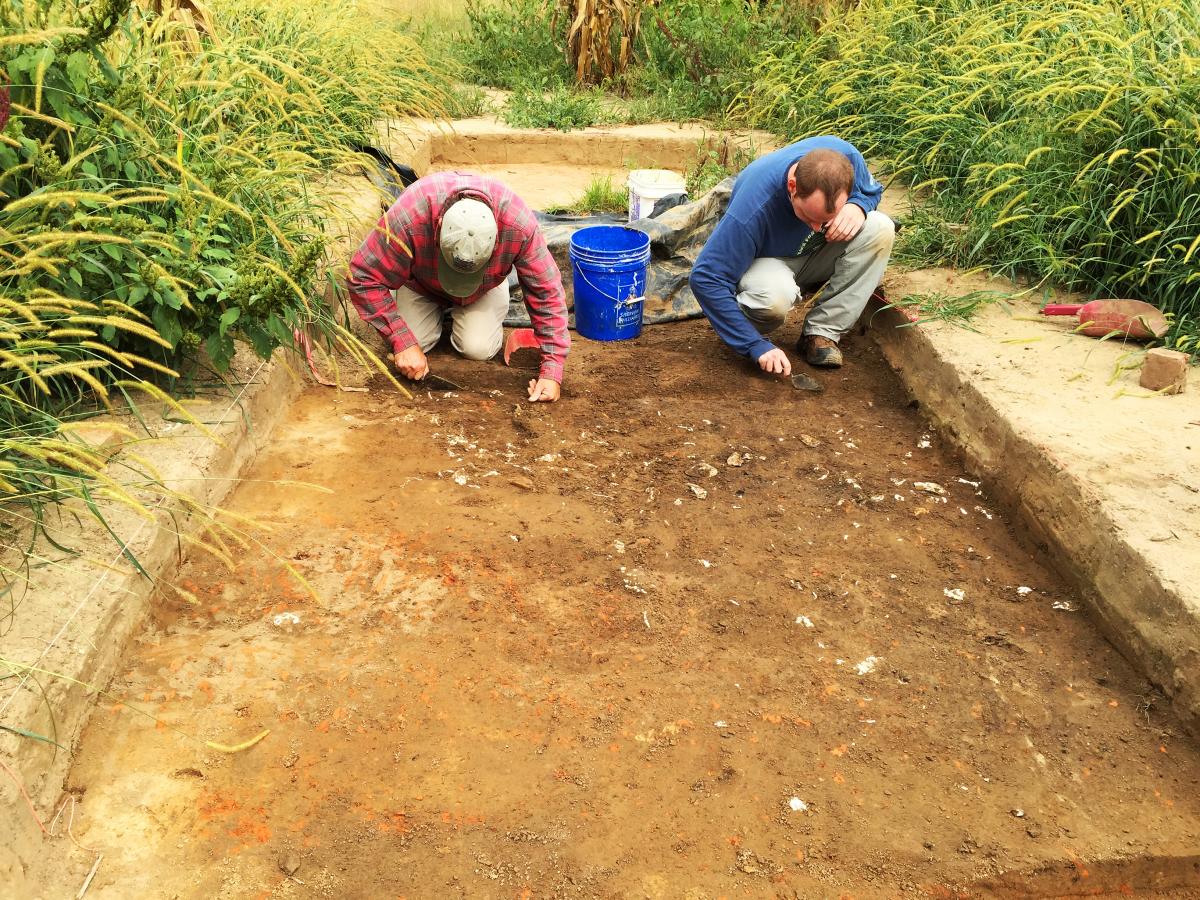Environmental Archaeology at SERC
About the Project
The Sellman Plantation, located on the SERC campus, is made up of 500 acres of mainly farmland and the historic Sellman House. The area is full of history just waiting to be explored, and that is exactly what volunteer scientists are doing as part of several active archaeology projects at the plantation. All of the projects study the relationship between the land and the people that lived on it. Environmental archaeology is important because it allows us to study the complex ways in which humans in the past interacted with the environment. The information volunteer scientists gather could be used to address similar problems we face today.
Archaeologist Jim Gibb is collaborating with volunteers to explore this vast and beautiful land. There are three major areas of research that they are currently investigating on SERC property:
- Erosion and sedimentation
- Species diversity
- Coal usage
History of Sellman Plantation
The Sellman family owned and lived on this property for almost 200 years (1729-c.1916). They sold it to the Kirkpatrick-Howat family, who owned the land until SERC acquired it in 2008. We do not know as much about the residents before the Sellmans, which is part of what the excavation hopes to uncover.
Learn more about the property in this SERC blog post.
Archaeology Research Questions
What are we trying to learn?
The projects at the Sellman Plantation all fall within the field of environmental archaeology: the study of the relationship between the land and the people who lived on it over time.
-How did people’s interactions with the land shape their cultures?
-How did their cultures shape the land?
Click here to learn more about specific projects our volunteer scientists work on!

Environmental archaeology is important because it allows us to study the relationship humans had with their surroundings over time. We change the environment to suit our needs, but how might those changes affect our surroundings now and in future years? By learning about the past, we can make better decisions about our land use today.
The study of environmental archaeology is directly in line with the rest of SERC’s mission. SERC scientists are working to understand the environment to promote a sustainable future. Some labs at SERC focus on the reduction of animal habitat or sea-level rise, which are both affected by human activities. Environmental archaeology is different because it looks at history to identify what actions caused certain results.
Archaeology StoryMap
Click through this StoryMap to learn more about our environmental archaeology program and campus! This map was created in 2015 by Jacob Saindon as a part of his internship project.
Get Involved
The SERC Archaeology Lab is staffed entirely by volunteers and college students. Without them, archaeology research at SERC would be impossible. We encourage anyone who is interested to get in touch with us. As a volunteer, you'll have the opportunity to...
- Excavate areas scientists think contain artifacts that speak to the lifestyle of the lands inhabitants.
- Sift soil from the units in giant sieves to “pan for artifacts,” such as tobacco pipes, nails, ceramic sherds, and Indian artifacts.
- Trowel the bottom and sides of the units to reveal color and texture patterns that provide evidence of how the land was used.
- Wash and identify recovered artifacts.
If you are interested in regularly volunteering, we encourage you to consider creating your own research project. You can...
- Develop original research questions.
- Create procedures to answer those questions.
- Implement procedures, with support from assistant volunteer scientists.
- Write reports discussing their methods and findings.
Eligibility and time commitment
- Minimum age is 16.
- Minimum time commitment is three 3-hour visits, but more visits are common and encouraged.
Location and days/times
The Archaeology lab and excavation sites are located on the SERC campus in Edgewater, MD.
The lab is active on Wednesdays from 9 a.m.—3 p.m. (with a lunch break at 12 pm), but volunteers don’t need to stay the entire day.
To sign up or for more information
Contact Rachael Mady, SERC Participatory Science Coordinator, at MadyR@si.edu or 443-482-2276.